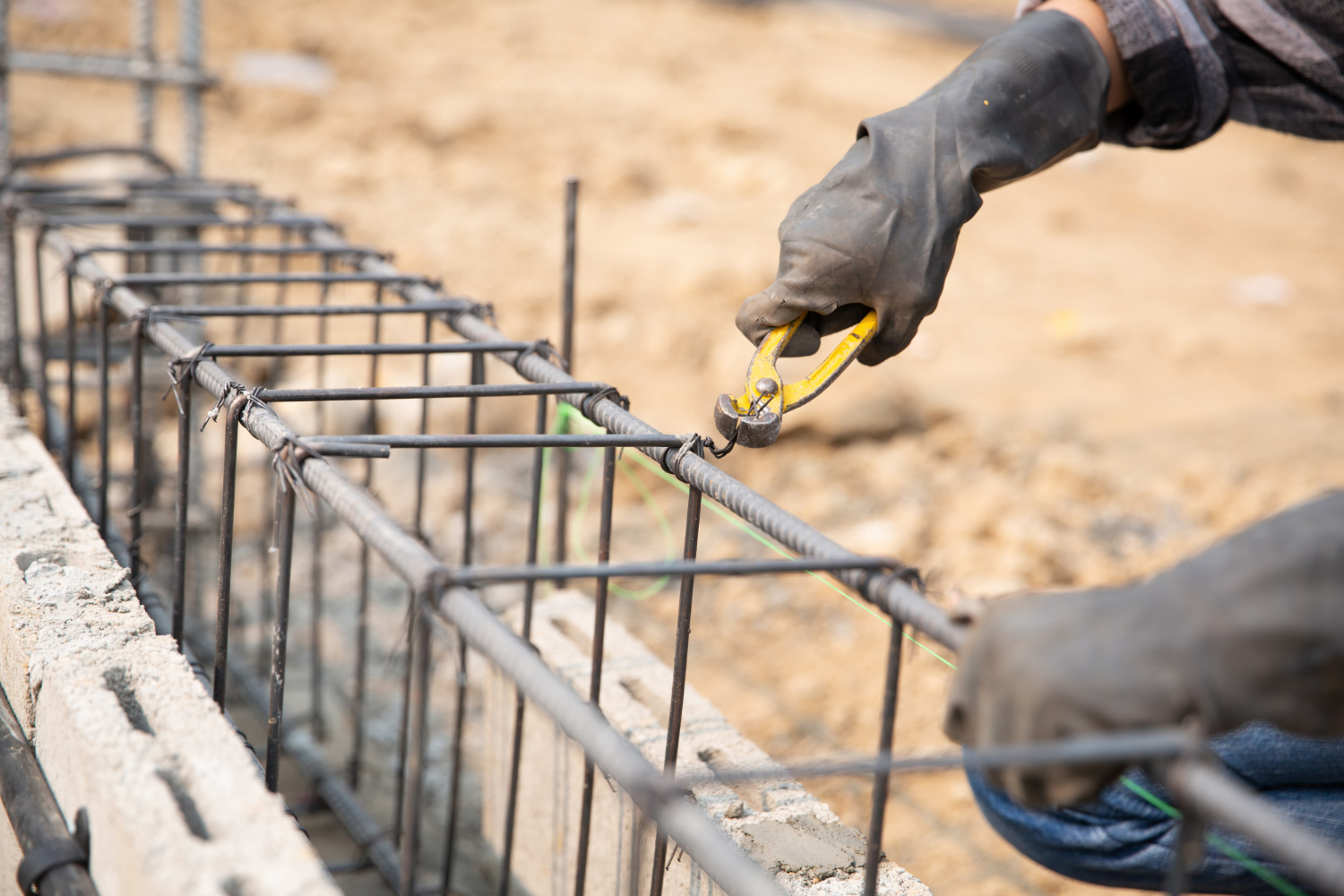Walls aren’t just there to separate rooms. They also hold up your home and keep it stable. Over time, though, pressure from soil, water, or shifting foundations can cause walls to bow, crack, or even tilt. That’s where wall support systems come in. Historically, steel braces and beams have been the go-to solution. They’re strong and do the job, but technology has moved forward, and there are now better alternatives.
One of the standout advancements is carbon fiber. It’s lighter, more flexible, and just as strong if not stronger when installed correctly. Whether you’re dealing with a finished space or a basement in need of structural help, carbon fiber support straps are showing up more and more in homes across Quincy and beyond. Homeowners are starting to ask why this modern material might be a smarter choice than the old standard of steel. Let’s take a closer look.
Understanding Carbon Fiber and Steel for Wall Support
Both steel and carbon fiber are used to reinforce walls, especially when they’re showing signs of bowing or cracking due to pressure from the outside. But these materials have very different properties that lead to different outcomes after installation.
Steel is known for its strength and has long been used to shore up leaning or bowed walls. It’s rigid, resilient, and time-tested. Steel beams often get anchored to the floor and ceiling to help hold the wall in place. But because of its solid form and weight, working with steel can require heavy lifting, drilling, and sometimes disruption to finished areas of the home. It tends to stand out, both during and after installation.
Carbon fiber, on the other hand, is made from strands of carbon woven into a fabric that’s applied directly to the wall with a strong adhesive resin. Once it cures, the carbon fiber strap becomes incredibly strong and prevents the wall from shifting any further. The biggest difference is that carbon fiber conforms tightly to the wall, which avoids bulking up the space and allows homeowners to paint over it later for a cleaner finish.
Here’s how the two materials compare when it comes to wall repair:
– Strength: Both are very strong, but in different ways. Carbon fiber resists tension very well, while steel handles compression.
– Weight: Carbon fiber is extremely lightweight, making it easier to transport and install.
– Flexibility: Carbon fiber adapts better to minor wall shifts after installation, while steel is rigid.
– Durability: Carbon fiber doesn’t rust or corrode, while steel can weaken over time if exposed to moisture.
Understanding these differences can help determine which material makes more sense for a particular problem or space. In many newer applications, carbon fiber is becoming the preferred method for quick, clean, and long-lasting wall support.
Advantages of Carbon Fiber Over Steel
It’s not just the strength of carbon fiber that makes it stand out. There are a few practical reasons it’s quickly becoming a go-to material for wall stabilization projects in Quincy and other parts of the region.
1. Lighter and Easier to Work With
Carbon fiber materials are incredibly lightweight compared to steel. That means less effort is needed to transport and apply them, and there’s less disruption during installation. It also means faster turnaround times, which homeowners appreciate during the busy summer months.
2. No Rust, No Rot
Unlike steel, carbon fiber doesn’t rust or corrode. That matters a lot in basements or crawlspaces where moisture can build up. Once it’s installed, carbon fiber holds its shape and doesn’t break down from contact with water or humidity. It’s a strong fit for long-term repair.
3. Slim Profile with Powerful Results
The thin, flat design of carbon fiber straps makes them barely noticeable. Installing them doesn’t reduce room space, and the straps can even be painted over to match the wall. In comparison, steel beams often take up several inches and leave a visible footprint.
4. Better Strength-to-Weight Ratio
Carbon fiber may weigh less, but don’t let that fool you. It can hold back an enormous amount of pressure. When bonded properly to a wall, it acts like a shield, stopping further movement and keeping the wall stable year after year.
When one Quincy homeowner noticed a steady bow forming along their basement wall, they imagined a long, messy steel repair ahead. But with carbon fiber, the work wrapped up quickly without any major changes to the room. The strap blended right into the wall after it was painted, making it hard to tell any work had been done at all. The stress of dealing with structural issues suddenly felt a lot lighter.
Case Studies and Practical Applications in Quincy, IL
Carbon fiber wall repair isn’t just a trend. It’s a real solution that’s already making a difference in homes right here in Quincy, IL. When walls start to shift due to soil pressure, old drainage problems, or age, homeowners want fixes that won’t disrupt their lives or leave behind an eyesore. In many cases, carbon fiber is answering the call.
One common example involves older homes with poured concrete or block basement walls. Over time, moisture and hydrostatic pressure caused several of these walls to bow inward. In previous decades, steel beams would’ve been installed to help hold things in place. But these can take up space and often affect the look and use of basement rooms. Carbon fiber straps, on the other hand, are thin and strong. Once in place, they stop further movement and blend into the wall surface.
In one Quincy home near South 24th Street, a homeowner noticed horizontal cracks forming halfway down the basement wall. It was a clear sign of pressure from the outside soil. They chose carbon fiber for the fix because they still used their basement every day. With a finished ceiling and drywall nearby, the work had to be tidy and low impact. The straps were installed cleanly and later painted over, giving that homeowner both the peace of mind and the uninterrupted space they needed. Unlike bulky steel posts, nothing blocked their furniture or storage afterward.
Carbon fiber has also come in handy in homes with older or delicate interiors. Because the straps are installed without heavy equipment and don’t involve deep drilling or framing changes, they’re a better match for homes where preserving existing finishes is a priority. That makes them especially useful for mid-century or turn-of-the-century homes common throughout Quincy.
While there’s no one-size-fits-all answer, carbon fiber continues to show real benefits when compared to older repair methods. It can provide both stability and a clean outcome without extra clutter or long disruptions.
Choosing the Right Material for Your Needs
Deciding between carbon fiber and steel for wall support depends on a lot of factors. Every home and foundation is different. Some issues call for heavier reinforcement, while others can be corrected with materials that offer more flexibility and a better fit inside a used space.
Here are a few things to think through when facing a wall repair:
– How much movement is present?
If the wall hasn’t shifted much, carbon fiber may be all you need. It specializes in halting small to moderate bowing. If the wall is far enough out of alignment or pushing past code limits, you might need additional support methods.
– What’s the current condition of the basement or crawlspace?
Finished basements or tight crawlspaces are often better suited to carbon fiber, which requires less space and brings less disruption to walls and ceilings.
– What material is your wall made of?
Some wall types bond better with carbon fiber. Poured concrete and concrete block walls are good candidates. A thorough inspection can help decide the best match.
– Do you want a low-profile solution?
If keeping the space usable and clean-looking matters to you, carbon fiber wins out easily. There’s no added bulk, and most people don’t even notice it’s there once it’s painted.
Professional support is always a smart idea when deciding on a structural repair. It’s not just about picking the next big product. It’s about choosing the right one for your situation. Trained pros can evaluate wall damage, look at long-term risks, and match you with a method that keeps your home safe.
Why Homeowners Are Choosing Carbon Fiber
Quincy homeowners aren’t just repairing their bowing walls. They’re making smart, lasting upgrades that protect their homes without making them feel like construction sites. Carbon fiber stands out because it respects your space, works fast, and holds its strength over time.
While steel still has its place in some foundation repairs, carbon fiber isn’t going anywhere. Its combination of strength, simplicity, and clean design makes it one of the most forward-thinking solutions for homes dealing with foundation pressure. Whether you’re dealing with a single bowed wall or planning ahead for future stability, carbon fiber just makes good sense. It brings homeowners the results they need without turning their day-to-day life upside down. And that peace of mind is always worth it.
If you’re in Quincy, IL and noticing signs of bowing or cracking walls, consider the lasting benefits of using carbon fiber wall repair to strengthen your home’s foundation. This modern approach offers a clean, non-intrusive solution that won’t disrupt your living space. Learn how King Waterproofing & Foundation Solutions can help reinforce your basement walls with a durable fix by exploring our approach to carbon fiber wall repair today.


